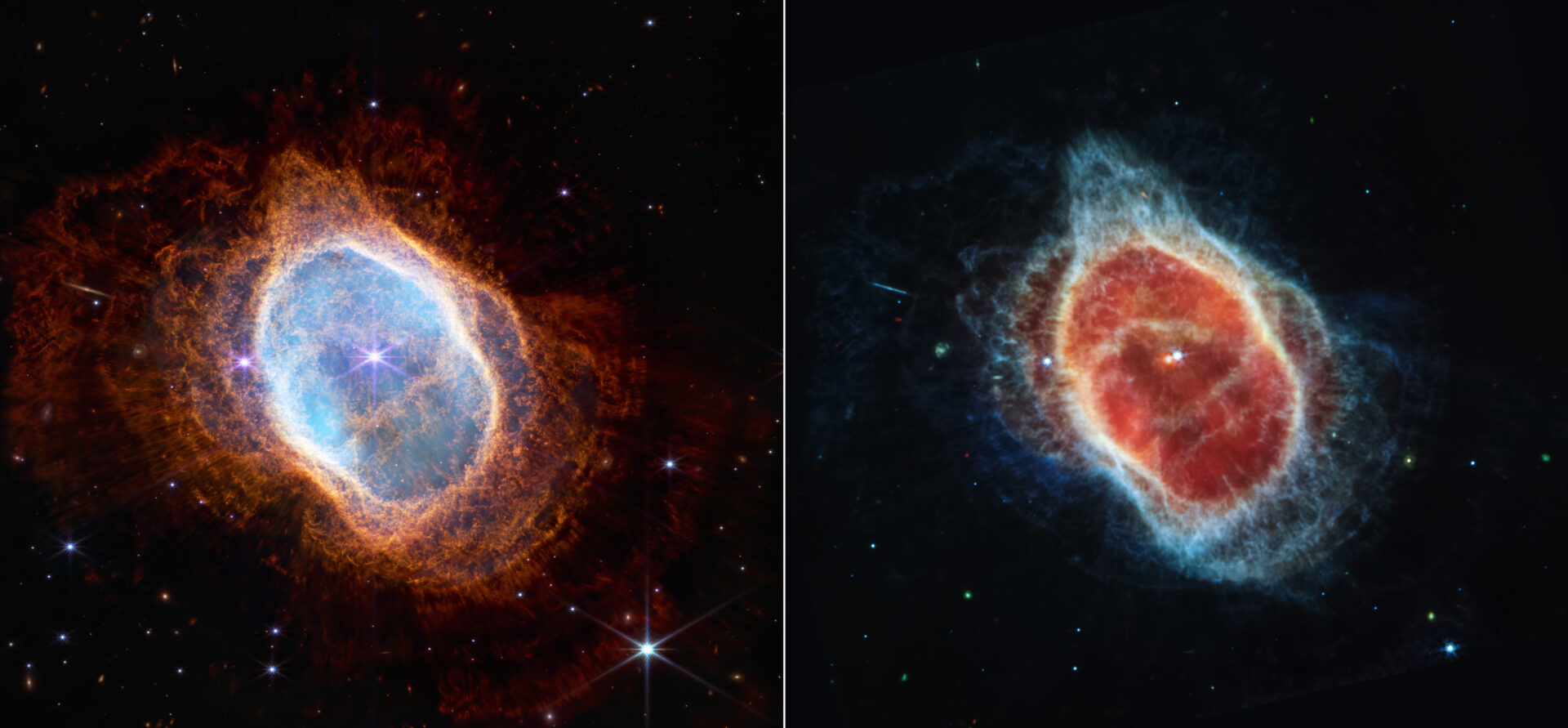NASA recently showed the first high-resolution color images obtained by the most powerful James Webb space Observatory. A week after the long-awaited discovery, the Canadian Space Agency (CSA), together with the European Space Agency (ESA), which is also part of the JWST team, published an amazing video showing the impressive power of the telescope, which peers into the depths of the Universe to get an image of the Southern Ring nebula from a distance of 2,000 light-years from Earth.

The Southern Ring nebula (NGC 3132) is a dying star that has shed layers of dust and gas. The surrounding gas has dispersed over a distance of one light-year. The nebula is ejected by a weak component of a binary star – a hot white dwarf, and its ultraviolet radiation illuminates the surrounding gas. NASA called the binary star system “complex,” adding that the brighter star is at an early stage of its evolution and is likely to form its own planetary nebula in the distant future.
WOW! ???? This video zooms through space to reveal @nasawebb’s image of the Southern Ring Nebula, 2000 light-years from Earth. Canada’s Fine Guidance Sensor allowed the telescope to point at and focus on its target.
Credit: NASA, ESA, CSA, STScI, and the Webb ERO Production Team pic.twitter.com/my5vbAjD80
— Canadian Space Agency (@csa_asc) July 21, 2022
JWST used two NIRCam and MIRI cameras to capture stunning footage of NGC 3132 in the near and mid-infrared ranges. A phenomenally accurate special focus and aiming sensor FGS helps to focus on the object. The CSA explains that the sensor is so sensitive that it can detect “a tiny angular displacement equivalent to the thickness of a human hair when viewed from a distance of one kilometer.” But to make it clearer, the sensitivity of the telescope is so strong that thanks to it, it would be possible to see individual faces of Lviv residents directly from Kyiv.
The James Webb Space Telescope is currently operating about 1.6 million kilometers from Earth. The USD 10 billion mission, stretching over almost 20 years, seeks to learn more about the origin of the Universe, while at the same time searching for distant planets on which life may exist. Since its mission has really begun in recent weeks, humanity expects sensational discoveries in the coming years. Moreover, the telescope’s mission itself is designed at least until 2032.
Recall that earlier James Webb found a candidate for a supernova.
According to NASA
Follow us on Twitter to get the most interesting space news in time
https://twitter.com/ust_magazine
